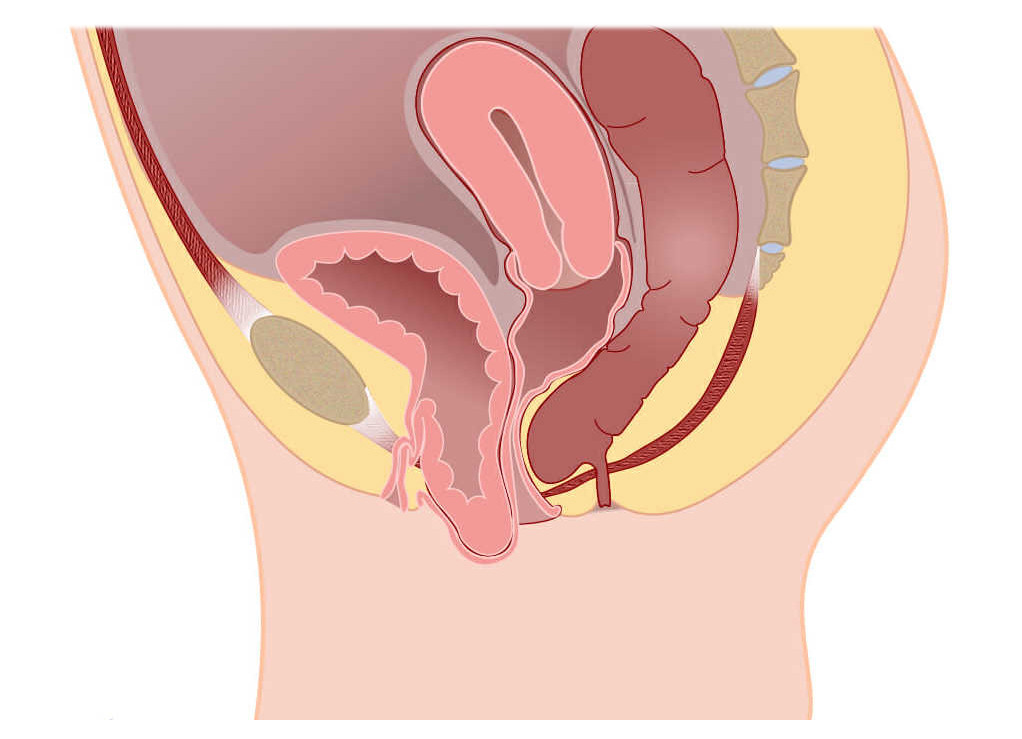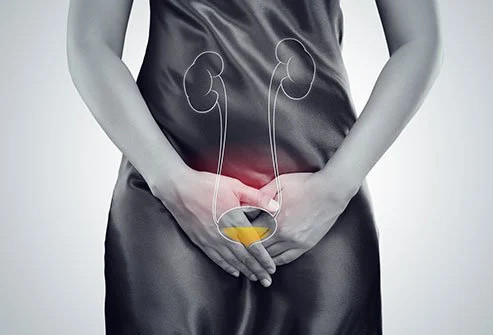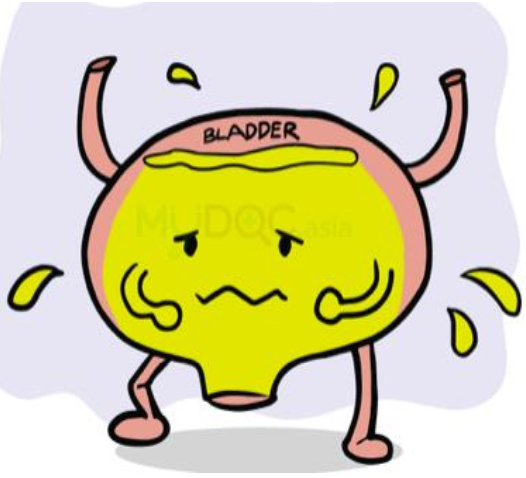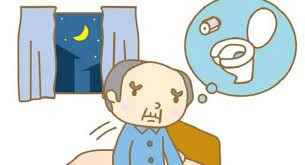Definisi
Sistokel adalah kondisi dimana kandung kemih turun dari posisi normalnya di panggul dan mendorong dinding vagina. Sistokel merupakan tipe turunnya (prolaps) organ panggul yang paling sering terjadi. Para ahli memperkirakan bahwa hampir setengah populasi wanita yang pernah melahirkan memiliki prolaps organ panggul dalam stadium yang bervariasi. Prolaps organ panggul terjadi ketika dinding vagina, rahim, atau keduanya kehilangan jaringan penyangganya yang normal, sehingga organ panggul turun atau menonjol ke saluran vagina atau keluar dari lubang vagina. Organ panggul lainnya, seperti kandung kemih atau usus, dapat terlibat juga dan turun dari posisi normalnya di tubuh.
Sistokel merupakan kondisi yang umum ditemukan. Dokter biasanya membagi sistokel menjadi beberapa stadium yaitu:
- Stadium 1: sistokel derajat ringan, kandung kemih hanya turun sedikir ke dalam vagina.
- Stadium 2: sistokel derajat sedang, kandung kemih turun lebih jauh sampai mencapai bukaan vagina.
- Stadium 3: sisokel derajat lanjut, kandung kemih keluar dari vagina.
Penyebab
Dasar panggul terdiri dari otot, ligamen (jaringan elastis yang menghubungkan tulang dan menstabilkan sendi), dan jaringan ikat yang menyangga kandung kemih dan organ panggul lainnya. Hubungan antara organ panggul dan ligamen dapat melemah seiring berjalannya waktu, atau bisa terjadi karena trauma/cedera yang timbul dari proses persalinan maupun kebiasaan mengejan. Ketika hal ini terjadi, kandung kemih dapat turun ke bawah dan menonjol ke vagina.
Hal-hal yang dapat berkontribusi menjadi penyebab terjadinya peregangan atau kelemahan otot dan jaringan ikat di panggul meliputi:
- Kehamilan dan persalinan, terutama persalinan normal
- Kondisi yang menyebabkan mengejan berulang atau peningkatan tekanan di area panggul, seperti:
- Konstipasi (sembelit)
- Kelebihan berat badan atau obesitas
- Mengangkat beban berat
- Batuk lama atau bronkitis
- Penuaan
- Riwayat operasi daerah panggul
- Kelemahan otot di sekitar vagina akibat penurunan hormon estrogen setelah menopause
Faktor Risiko
Sistokel dapat terjadi pada wanita usia berapapun, namun risiko menderita sistokel meningkat seiring pertambahan usia karena otot dan jaringan tubuh akan melemah. Faktor lain yang dapat meningkatkan risiko sistokel meliputi:
1. Kehamilan dan persalinan normal
Wanita yang pernah menjalani persalinan normal, kehamilan kembar, atau memiliki bayi dengan berat badan lahir yang besar berisiko lebih tinggi untuk mengalami sistokel.
2. Menopause
Risiko sistokel meningkat seiring pertambahan usia, terutama setelah menopause. Setelah menopause, produksi estrogen tubuh berkurang. Estrogen berfungsi membantu menjaga kekuatan lantai panggul.
3. Faktor genetik
Beberapa wanita dilahirkan dengan jaringan penyambung yang lebih lemah sehingga lebih rentan mengalami sistokel. Selain itu, adanya riwayat keluarga dengan prolaps organ panggul juga meningkatkan risiko sistokel.
4. Faktor lainnya
Riwayat operasi panggul seperti histerektomi (pengangkatan rahim) atau operasi perbaikan prolaps organ panggul serta obesitas bisa meningkatkan risiko perempuan untuk mengalami sistokel.
Gejala
Banyak wanita dengan sistokel, terutama yang ringan, tidak memiliki gejala atau tanda apapun. Semakin berat derajat sistokel, maka semakin mungkin akan timbul gejala. Gejala sistokel meliputi:
- Sensasi berat, penuh, tertekan, atau tidak nyaman pada panggul atau perut bawah. Sensasi ini akan memburuk saat berdiri, mengangkat beban, batuk, atau seiring berjalannya hari.
- Sensasi adanya sesuatu yang menonjol atau keluar melalui vagina. Tonjolan ini dapat terlihat atau teraba.
- Sakit punggung bawah.
- Sering infeksi saluran kemih.
- Buang air kecil lebih sering atau sulit menahan BAK.
- Bocornya urine tanpa disengaja (inkontinensia urine).
- Rasa tidak puas setelah BAK karena masih ada urine yang tersisa di kandung kemih.
- Harus mengejan untuk memulai BAK.
- Konstipasi atau sembelit.
- Harus mendorong kandung kemih ke atas untuk mengosongkan kandung kemih.
- Nyeri saat berhubungan intim.
- Kesulitan dalam memakan atau memasukkan tampon atau aplikator vagina.
Gejala-gejala di atas seringnya lebih terasa setelah berdiri dalam jangka waktu lama dan dapat hilang dengan sendirinya ketika berbaring.
Diagnosa
Untuk mendiagnosa suatu sistokel, dokter akan menanyakan seputar riwayat kesehatan Anda dan melakukan pemeriksaan fisik. Pemeriksaan lain mungkin akan diperlukan untuk mencari adanya masalah lain pada saluran kemih. Pemeriksaan tambahan lain yang mungkin disarankan dokter untuk dilakukan adalah:
- Sistouretrogram atau voiding cystogram. Pemeriksaan ini adalah pemeriksaan X-ray atau rontgen kandung kemih yang diambil ketika seorang wanita sedang buang air kecil, dengan kandung kemih dan lubang uretra tempat keluarnya urine terisi dengan cairan kontras. Hal ini akan menunjukan bentuk kandung kemih dan sumbatan pada saluran kemih jika ada.
- Tes pencitraan MRI dapat digunakan untuk menentukan stadium sistokel.
Tata Laksana
Sistokel merupakan penyakit yang bisa ditangani, pilihan terapi tergantung dari tingkat keparahan penyakit. Sistokel derajat ringan atau sedang dapat diobati dengan terapi non-bedah. Pada kasus yang lebih berat, operasi dapat diperlukan untuk menjaga vagina dan organ panggul lainnya tetap berada pada posisi normalnya. Selain dari stadiumnya, pilihan terapi sistokel juga mempertimbangkan kualitas hidup pasiennya, dimana dokter akan menilai seberapa besar pengaruh sistokel terhadap aktivitas dan fungsi sehari-hari.
Pilihan terapi sistokel meliputi:
- Perubahan aktivitas dengan menghindari aktivitas tertentu, seperti mengangkat beban berat atau mengejan saat buang air besar, yang dapat memperburuk sistokel.
- Latihan Kegel. Olahraga rutin untuk menguatkan otot panggul setiap hari dapat memberikan manfaat yang baik.
- Memasang cincin atau ring pesarium pada vagina, dilakukan untuk menyangga kandung kemih agar tetap berada pada tempatnya.
- Prosedur operasi, bisa menjadi pilihan untuk mengembalikan kandung kemih ke posisi normalnya, bila terapi lain yang sudah dilakukan tidak bertahan lama.
- Terapi pengganti hormon. Hal ini dapat membantu memperkuat otot sekitar vagina dan kandung kemih. Jika Anda memikirkan terapi pengganti hormon, Anda harus berkonsultasi dengan dokter mengenai risiko dan manfaatnya.
Komplikasi
Meskipun tidak mengancam nyawa, sistokel dapat menyebabkan dampak negatif pada kualitas hidup seorang wanita. Jika tidak ditangani, kondisi ini dapat bertambah buruk. Pada kasus yang berat, sistokel dapat menyebabkan kesulitan dalam buang air kecil yang akhirnya dapat berujung pada kerusakan atau infeksi ginjal.
Pencegahan
Biasanya sistokel tidak dapat dicegah, namun terdapat cara untuk meringankan gejala dan membantu mencegah perburukan sistokel. Cara tersebut adalah:
- Olahraga otot dasar panggul. Otot dasar panggul yang kuat akan membantu menahan organ panggul pada tempatnya. Senam Kegel dapat menguatkan otot lantai panggul.
- Menjaga berat badan ideal. Kelebihan berat badan akan menambah tekanan pada panggul. Perubahan pada diet dan gaya hidup dengan memakan lebih banyak buah dan sayuran serta olahraga secara teratur akan membantu mempertahankan berat badan ideal.
- Hindari mengangkat beban berat atau mengangkatnya dengan benar. Ketika mengangkat beban berat, gunakanlah kekuatan dari tungkai, bukan dari pinggang atau punggung.
- Mencegah atau menangani konstipasi. Makanlah cukup serat, minum banyak air, dan beraktivitas fisik secara rutin.
- Mengontrol batuk lama. Berkonsultasilah ke dokter untuk mendapatkan terapi batuk atau bronkitis jika ada. Berhenti merokok dapat membantu.
Kapan Harus ke Dokter?
Sistokel dapat menyebabkan rasa tidak nyaman, namun jarang menyebabkan nyeri. kondisi ini dapat menyulitkan Anda dalam buang air kecil, yang bila terus berlanjut dapat berujung menjadi infeksi saluran kemih. Jika Anda memiliki gejala dan tanda yang mengganggu Anda atau mengganggu aktivitas sehari-hari Anda, maka sebaiknya Anda berkonsultasi dengan dokter.
Mau tahu informasi seputar penyakit lainnya? Cek di sini, ya!
- dr Hanifa Rahma
Cystocele. (2022). Retrieved 6 July 2022, from https://www.hopkinsmedicine.org/health/conditions-and-diseases/cystocele
Anterior vaginal prolapse (cystocele) - Symptoms and causes. (2022). Retrieved 11 July 2022, from https://www.mayoclinic.org/diseases-conditions/cystocele/symptoms-causes/syc-20369452
Health, N. (2022). Cystocele | NIDDK. Retrieved 11 July 2022, from https://www.niddk.nih.gov/health-information/urologic-diseases/cystocele
Cystocele (Fallen or Prolapsed Bladder): Symptoms & Treatment. (2022). Retrieved 11 July 2022, from https://my.clevelandclinic.org/health/diseases/15468-cystocele-fallen-bladder#outlook--prognosis











